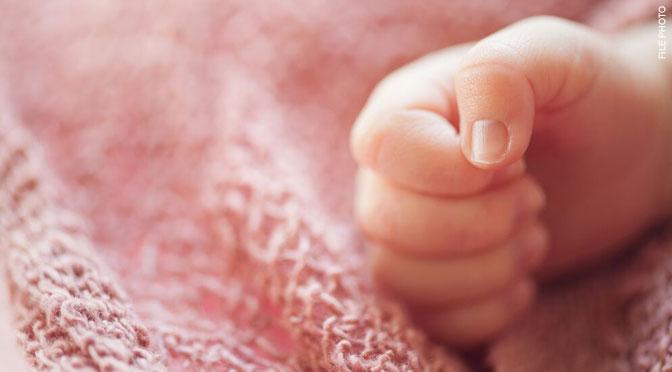In her book Defiant Birth: Women who Resist Medical Eugenics, Melinda Tankard Reist collected stories from couples whose preborn babies were diagnosed with severe or lethal medical problems. One story in the book is that of Sandi Seyferth and her husband, who faced a terrible choice when they were told their daughter would not survive birth.
The Seyferths were happily expecting their fifth child. But at 18 weeks, an ultrasound did not go as planned…
The ultrasound date came quickly and my husband and I were excited to see our growing baby. The routine ultrasound seemed to be moving along okay, although it took a very long time and the technician seemed to be taking a lot of pictures of my baby’s bones… When she returned she began taking additional measurements. I started to worry…
A doctor who examined the ultrasound told the couple:
My amniotic fluid was very low; my baby’s bones were small; the femur bones were curved; the head was odd shaped, and the kidneys, stomach, and bladder were abnormally sized. In addition, the report said that my baby’s left foot was turned – possibly clubbed. [The doctor] referred me to a perinatologist – and added that the report indicated a pregnancy which, in his opinion, “smelled like chromosomal problems”, especially in light of my advanced maternal age (37) and that I should “keep my options open.”
Sent to a perinatologist, they had more tests, which only confirmed that there were serious problems with the baby:
After an hour-long ultrasound performed by a highly skilled technician, the nationally regarded perinatologist personally came in to perform a second ultrasound, in uncomfortable silence. … we were then asked to wait for the doctor in the office down the hall. She arrived about a half hour later… There was no reason to mince words: “Your baby will die.”
The child, they said, had a condition called lethal skeletal dysplasia, a form of dwarfism in which the baby’s arms and legs are disproportionately short and malformed, and the chest cavity is too small. These babies die at birth or shortly afterwards.
Sandi and her husband were devastated. But despite the terrible news, they refused to abort. They named their baby Grace, meaning “undeserved gift from God,” and prepared to welcome her into the world however brief her stay.
When her original obstetrician learned of the couple’s decision not to abort Grace, he refused to provide prenatal care. Telling them that “90% of people with your diagnosis would have made the appointment [for an abortion] by now,” he angrily dropped their case.
Sandi and Grace were transferred, but the pressure to abort continued:
I entered a fetal assessment program and had ultrasounds performed monthly to monitor my baby’s progress. Our meetings were coordinated by the Director of Genetics, who was not at all sensitive to my decision not to terminate. In fact, until 28 weeks had passed and a termination was no longer possible, this topic was the focus of our monthly meetings. My husband and I stayed the course of our decision and avoided the geneticist’s attempts to spread doubt and fear….
The diagnosis of our daughter’s condition was “validated” at each ultrasound…
After one of the ultrasounds, a “beautiful, clear image” of Grace’s face was printed out and given to the couple. They put the ultrasound close-up photo on the refrigerator as a constant reminder of the humanity, dignity, and worth of their child. Steadfast in their refusal to abort, the couple prepared for Grace’s birth.
In the last ultrasound, weeks before the birth, the Director of Ultrasound, Director of Genetics, two neonatologists and a technician all concurred that the baby’s dysplasia had only grown worse.
Sandi went into labor at 35 weeks. She describes Grace’s birth:
Grace Marie was born at 11:19 AM. All eyes were on my daughter as she emerged screaming from the womb – my first impression was Wow! She doesn’t look that unusual to me.… There were about 8 to 10 medical doctors and nurses assisting. In addition, several other resident doctors and researchers were in the doorway and hallway, hoping to catch a glimpse of the “dysplasia baby.”
The medical team gathered around Grace were astonished. Although Grace was small (4 pounds and 2 ounces at 35 weeks) she was perfectly proportioned. There was no sign of any of the deformities seen on the ultrasounds. Shocked, the medical team thought it was too good to be true – but tests verified that Grace was perfectly normal and did not have dysplasia (even mild dysplasia) at all. Sandi Seyferth says:
We were in a complete state of shock. My husband and I just hugged and cried. Family and friends were called and we cried with each one of them. Everyone was stunned by Grace and the amazing result after all the terrible predictions. My husband and I spent the next two days in the hospital with Grace; we took turns just holding her, staring at her. We were so filled with happiness and thankfulness. The nurses had a baby shower to celebrate her life.
At the time Seyferth wrote this story, Grace was 15 months old. Seyferth described her as:
an exuberant bundle of energy. She is walking, talking, and doing all the things a normal 15–month–old would do… she is a light to our whole family and a constant reminder that you never can lose faith even when all seems hopeless. I shudder to think of my feelings on this day had we listened to the many specialists who felt “interrupting” this pregnancy would be our best option. Would I ever have known the truth about my lovely daughter?
There is no explanation as to how so many medical experts with so much technology at their disposal could have been so completely wrong about Grace. This story proves that medical experts, whatever their credentials, are not always right. There is always hope, even in the most dire circumstances. While it’s true that not every baby diagnosed with a lethal abnormality turns out to be healthy, we can only wonder how many healthy babies have been aborted because their doctor’s, like Grace’s, were wrong.
Source: Sandi Seyferth “Your Baby Will Die: The Story of Grace” in Melinda Tankard Reist Defiant Birth: Women Who Resist Medical Eugenics (North Melbourne, Australia: Spinifex, 2006) 112 – 115, 118 – 119








